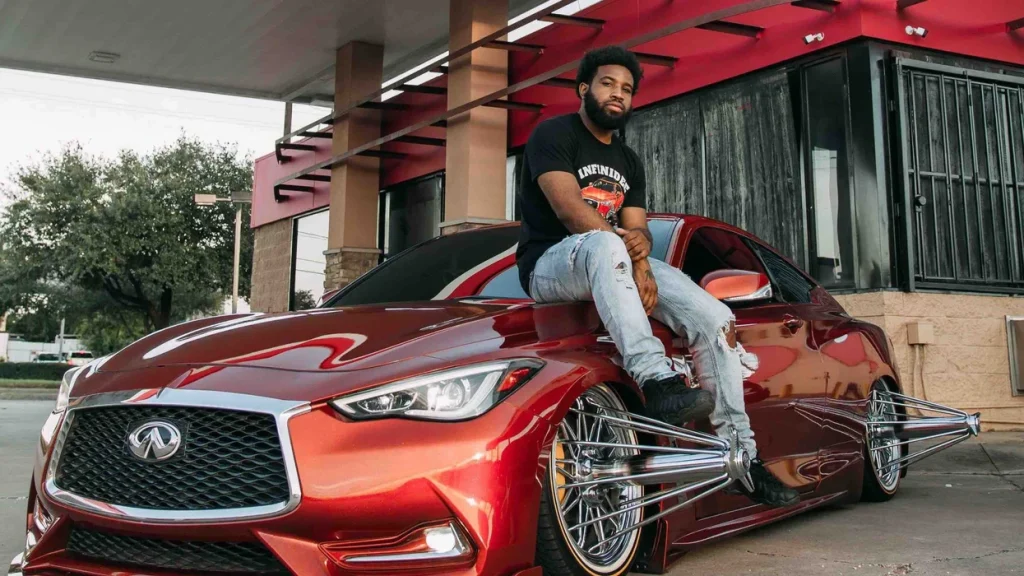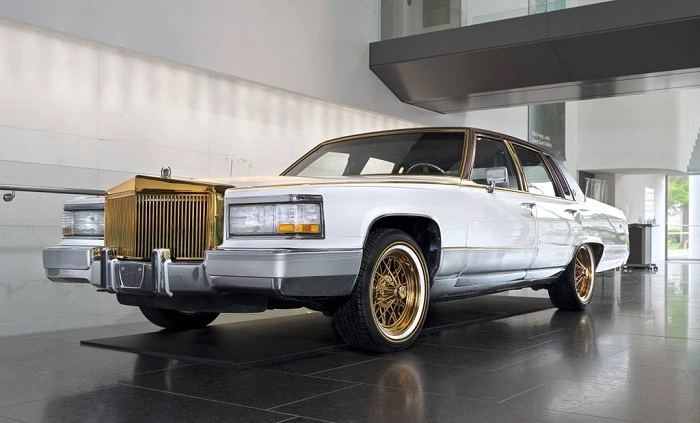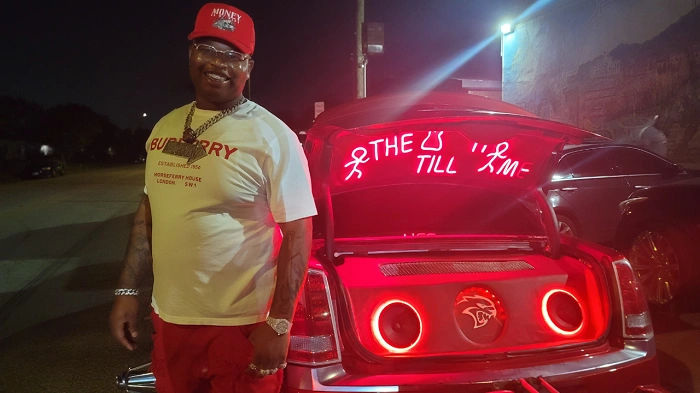Some cars are machines. Some are status. And some become symbols. The slab car is one of those symbols. Born in the streets of Houston, it’s more than chrome and candy paint. It’s culture. It’s storytelling in steel and glass. Wide elbows. Candy gloss. Swangas spinning out like wings. A slab car isn’t just driven. It’s displayed. It’s poetry rolling through the block. In this guide, we’ll explore the history of slab cars, their signature style, why they matter, and what it feels like to ride in one. Because a slab isn’t just a car. It’s a language you hear before you even catch the sound of the engine.
What Is a Slab Car
The meaning of slab
Slab stands for “Slow, Loud, And Bangin’.” That acronym captures the essence. These cars cruise slow. They ride with sound systems that shake blocks. They bang with style—showy, bold, unapologetic.
The base cars
Most slab cars are big American sedans from the 1970s, 1980s, and early 1990s. Think Cadillac, Lincoln, Buick. Heavy bodies. Long lines. Perfect canvases for transformation.
Why they stand out
Because no slab car looks stock. They’re dressed. Extended rims. Gloss paint. Candy finishes. Custom interiors. They’re built to be seen.
The History of Slab Cars
Houston roots
The slab car culture began in Houston, Texas. It grew out of hip-hop, community, and creativity. In neighborhoods where expression mattered, cars became moving art. Music videos and street scenes carried slabs into wider awareness.
The role of music
Rap and slab ride together. Artists like DJ Screw, Slim Thug, Paul Wall, and Z-Ro turned slabs into legends. The music slowed down, chopped and screwed, just like the cars that rolled low and slow through the city.
Evolution
From the 1980s candy Cadillacs to today’s show-ready Buicks, the slab has grown, adapted, but never lost its Houston soul.
Signature Features of a Slab Car
Swangas (elbows)
Extended wire-spoke rims that jut out wide. They’re the most recognizable feature. They catch light. They spin with pride. Swangas make slabs impossible to ignore.
Candy paint
Not just red. Candy red. Deep, wet, sparkling. Blues, greens, golds. Candy paint looks like liquid poured on metal.
Vogue’s tires
White walls. Yellow stripes. Classic and iconic. Paired with swangas, they finish the slab stance.
Pop trunk displays
Slabs open trunks to show neon lights, custom signs, and slogans. The trunk becomes a billboard glowing with pride.
Music systems
Slow, loud, and bangin’. Trunks loaded with speakers. Bass that rolls before the car even turns the corner.
Interior details
Leather. Woodgrain. Embroidered headrests. TV screens. Interiors match the flash of the outside.
Why Slab Cars Matter
Community identity
In Houston, slabs are neighborhood pride. They say, “This is who we are.” They mark history and unity.
Cultural expression
Slabs connect music, fashion, and art. They are style statements on wheels. They reflect roots, creativity, and resilience.
Rolling history
Every slab carries the past while evolving with the present. Driving one is not just about looks—it’s about honoring a culture that made space for voice through cars.
The Emotional Side of Slab Cars
A slab car is confidence you can hear. It’s swagger made visible. It’s driving slow enough for everyone to see, and loud enough for everyone to feel. Owning a slab is like owning a moving piece of your identity. It’s joy, pride, and history wrapped in candy paint.
Building a Slab Car: Steps
- Start with a classic sedan—Cadillac, Lincoln, Buick.
- Add swangas—extended rims define the stance.
- Install Vogues—tires with the iconic yellow stripe.
- Choose a candy color—deep gloss that glows.
- Upgrade the sound system—bass, clarity, volume.
- Customize the trunk—neon lights, slogans, personal touch.
- Detail the interior—leather, woodgrain, embroidery.
- Ride slow, ride proud.
Challenges of Owning a Slab Car
- Cost. Candy paint, rims, and audio systems add up.
- Maintenance. Custom parts need extra care.
- Attention. Slabs get noticed everywhere—good and bad.
- Insurance. Modifications can affect coverage.
But for slab owners, these challenges are worth it. Because the car isn’t just a car. It’s a legacy.
Slab Cars and the Law
In some places, wide swangas raised safety debates. Police watched the slabs closely. But the culture kept growing, fueled by community pride. Today, slabs are celebrated more, even featured in shows, parades, and museums.
The Future of Slab Cars
Slabs evolve. Some are built on newer models. Electric cars may even become future slabs, wrapped in candy paint and fitted with swangas. But the essence stays: Slow. Loud. And Bangin’. As long as Houston hip-hop beats, slabs will roll.
Stories from the Street
Picture this: a slab turning the corner, candy paint glowing under streetlights. The bass hits first. Kids point. Elders nod. Every eye follows. That’s not just transportation—it’s presence. It’s pride humming through the block. It’s Houston in motion.
Is a Slab Car for You?
Choose a slab if you love attention. If you see cars as canvases. If culture matters as much as horsepower. Avoid slabs if you prefer subtlety or want a quiet, practical ride. Because slab cars aren’t about blending in. They’re about standing out.
FAQs
What does slab stand for?
It means Slow, Loud, And Bangin’. A phrase that describes the style and culture.
What cars are usually turned into slabs?
Classic American sedans like Cadillacs, Lincolns, and Buicks are the most common bases.
What are swangas on a slab car?
They are extended wire-spoke rims that stick out wide, the most iconic feature of a slab.
Why are slab cars important in Houston?
Because they are part of the city’s hip-hop and cultural identity, representing creativity, pride, and unity.
Can you still build a slab car today?
Yes. Builders continue customizing cars with swangas, candy paint, and sound systems, keeping the tradition alive.



